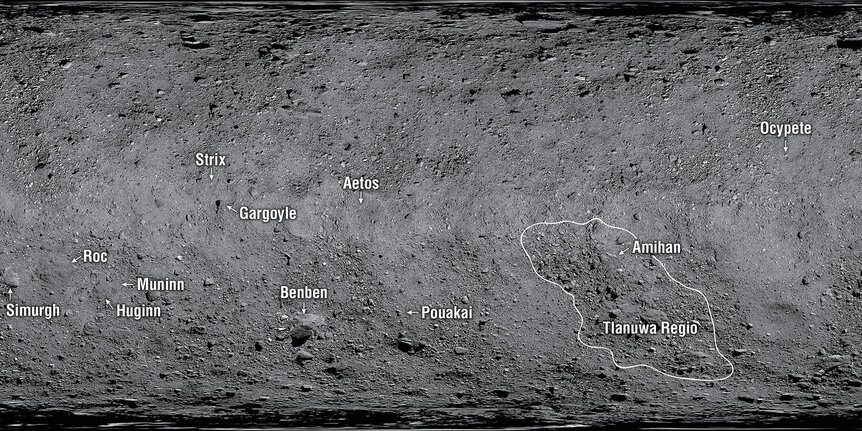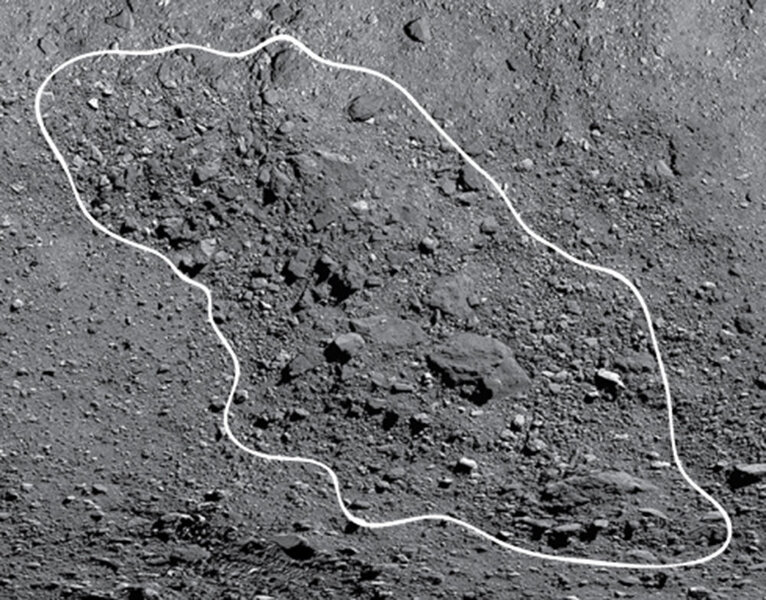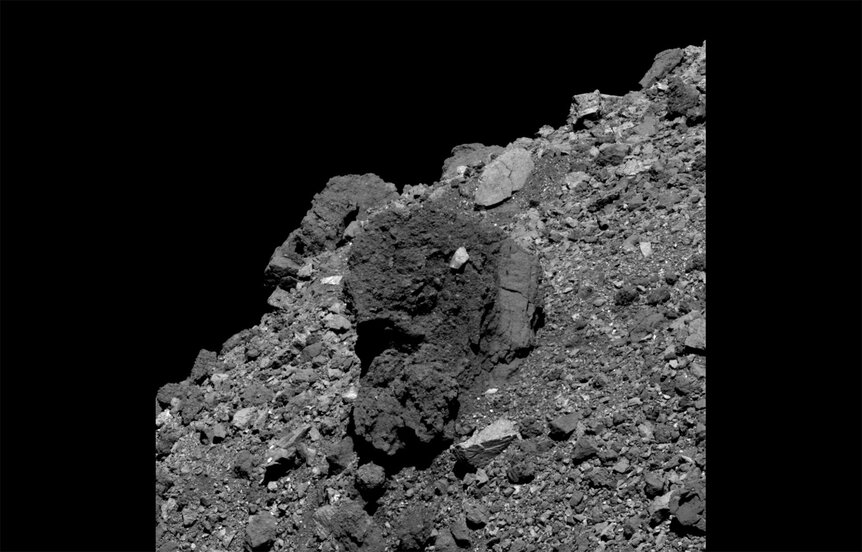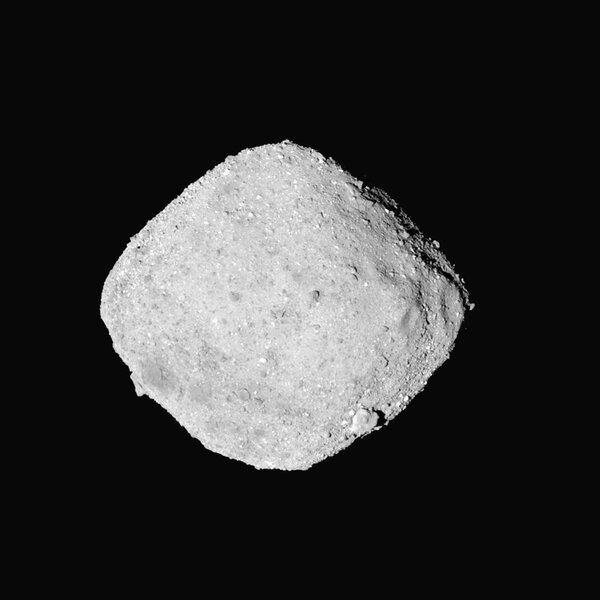Create a free profile to get unlimited access to exclusive videos, sweepstakes, and more!
Birds and creation on the asteroid Bennu… and why we name names
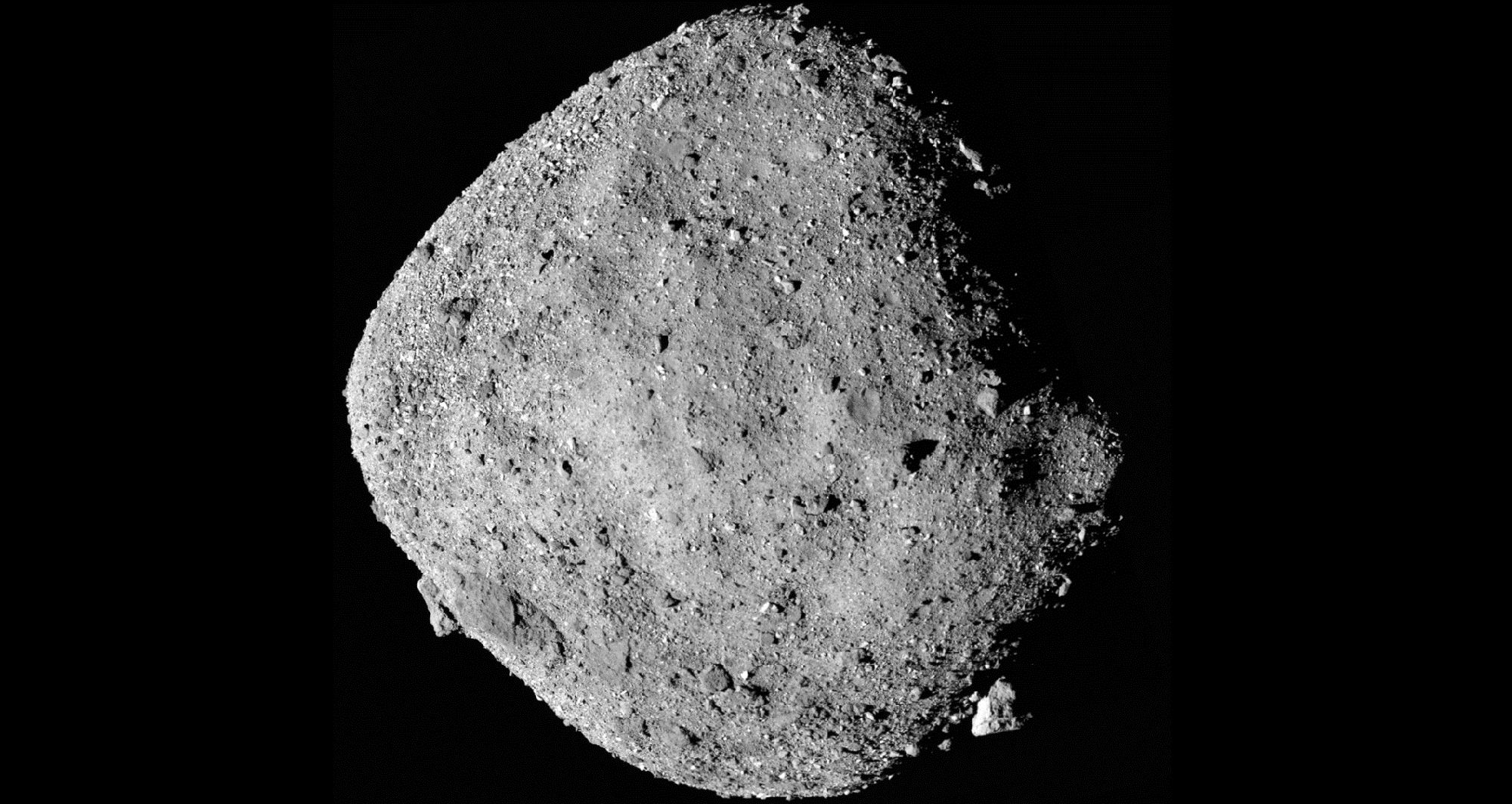
Bennu is a half-kilometer-wide pile of rocks that NASA’s OSIRIS-REx spacecraft has been investigating since it arrived at the asteroid in late 2018. The surface looks like the rubble from a construction site, but there are some features there that stick out enough to be noticeable.
An even dozen of these on Bennu’s surface now have official names, thanks to the International Astronomical Union, the Keeper of Official Astronomy Names™.
The geological features named are regions, boulders, craters, ridges, and grooves. For example, a boulder in the asteroid’s southern hemisphere sticking up an astonishing 21.7 meters is now named Benben Saxum. Saxum is Latin for rock, and Benben is “the primordial hill that first arose from the dark waters in an ancient Egyptian creation myth”. That is extremely cool.
Other large saxa were named, as well as some other features. Tlanuwa Regio is a region on the surface with scattered boulders on it, distinct from smoother terrain around it. Tlanuwa is from Cherokee myths about giant birds that scattered Earth with a serpent that turned into rocks. Roc Saxum is a boulder named after the mythical giant bird (rocs are one of my favorite fabulous beasts).
Gargoyle Saxum is a large (~20 meter long) boulder near Bennu’s equator. It’s one of the darkest rocks on the surface, giving the name a particularly keen meaning. And I do love gargoyles; my favorite is one I see every time I fly.
I’ll note that Bennu itself is named after a mythological Egyptian bird (which also ties in the spacecraft name, too). The features are named after birds and origin myths; the mission to the asteroid is in part to help us understand these rubble-pile asteroids, which in the distant past collected together to form planets. They tell us the story of our own origin, in a literal sense.
And all this has me thinking…
The naming of names is important. It helps us quickly ID sites for study, of course, and makes it far easier and familiar for scientists to discuss these sites. But more than that, it’s a way of honoring and remembering people and cultures, a salute to the rich and varied stories of peoples around the planet, and the people themselves.
Sometimes this practice goes awry. For example, James Webb was a director of NASA from 1961 to 1968, when its focus was almost entirely on human spaceflight. His name being attached to one of the largest robotic astronomical missions of all time would be mildly humorous in this case (funding for robotic exploration versus crewed flight has a long history of struggle inside NASA)… except that he was also a notorious homophobe.
Dan Savage wrote about this, and it’s an interesting read, but in the end I disagree with his opinion that we have better things to do than spend time worrying over naming things. I feel that it’s a relatively simple thing to name something like the James Webb Space Telescope after someone who wasn’t a vocal bigot. I can think of a dozen astronomers — many of them women — after whom it would be better eponymed. I’ll note that I’m thrilled the Large Synoptic Survey Telescope, a massive and massively important telescope that should go online in 2022, has been renamed after astronomer Vera Rubin. She faced rampant sexism in her career and was denied a Nobel Prize for her work confirming the existence of dark matter due to what is clearly a history of sexism in the Nobel committee.
What we name things does mean something, or else we wouldn’t name them. When it’s a person’s name, years down the road when that person is dead or at least memories are fuzzier, they will be remembered by the names they and we have bestowed on our works. When it’s something as grand as JWST or LSST we should have a care when naming it.
We all have feet of clay, and there are always things you can find about someone that would make you unhappy. But nothing in the human Universe is black and white; everything has levels to it, a spectrum. Certainly astronomy teaches us this as allegory over and again! Something I may be fine with you may not, and vice-versa, and I can guarantee there’s not a definable line where that cutoff may be. I think these situations should be judged on their merits, within reason.
As we discover and explore strange, new worlds, we’ll want to name the things we find there. It’s a natural impulse, and in my opinion a good one. Done correctly, it brings out the best in ourselves, and inspires others to do so as well.
The names we choose say something about the people and stories we honor, but more, they say something about us as well.
